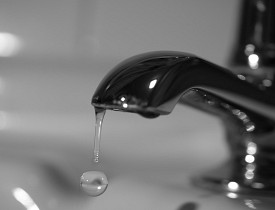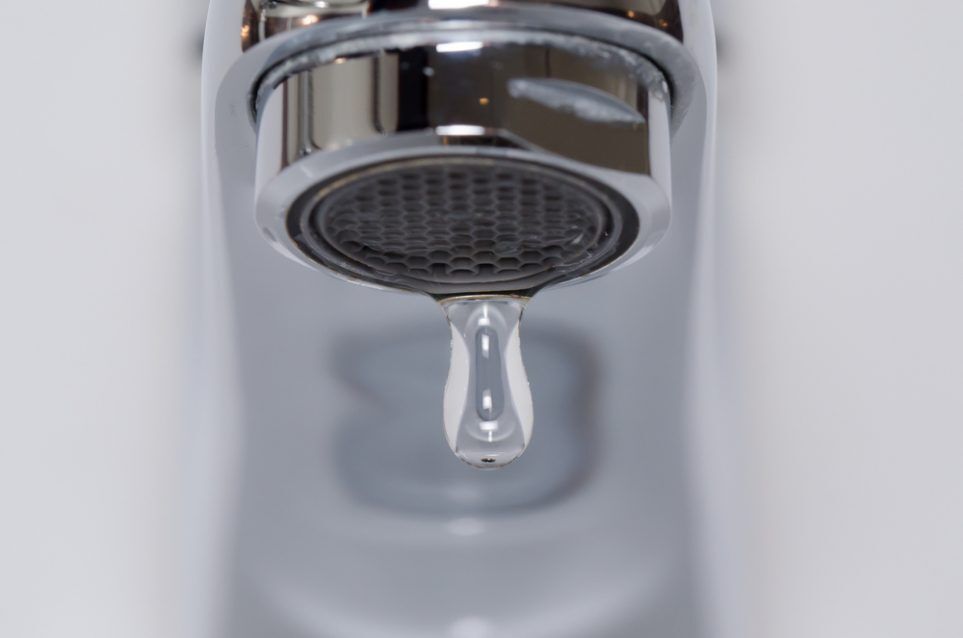Why It's Necessary to Correct a Malfunctioning Faucet
Why It's Necessary to Correct a Malfunctioning Faucet
Blog Article
Presented here down the page you can get a bunch of reliable guidance in relation to Why It's Important to Fix Leaky Faucets.

Leaking taps may feel like a small aggravation, but their impact goes beyond just the inconvenience of the audio. From wasting water to sustaining unnecessary economic expenses and wellness risks, ignoring a dripping faucet can lead to numerous repercussions. In this post, we'll delve into why it's crucial to address this usual home concern quickly and effectively.
Wastefulness of Water
Ecological Effect
Dripping taps contribute significantly to water wastefulness. According to the Environmental Protection Agency (EPA), a solitary faucet leaking at one drip per secondly can waste greater than 3,000 gallons of water per year. This not only pressures water resources however likewise influences communities and wild animals depending on them.
Financial Costs
Enhanced Water Costs
Past the environmental effect, leaking taps can blow up water costs significantly. The gathered wastefulness over time translates into higher utility costs, which can have been stayed clear of with prompt repair work.
Prospective Residential Property Damage
In addition, extended trickling can lead to damage to components and surface areas bordering the tap. Water accumulation can trigger discoloration, deterioration, and also structural problems if left neglected, resulting in additional repair work expenses.
Health and wellness Problems
Mold And Mildew and Mold Development
The consistent presence of dampness from a dripping faucet develops an ideal environment for mold and mildew and mold development. These fungis not only endanger interior air high quality however also present health and wellness risks, particularly for people with breathing conditions or allergies.
Waterborne Diseases
Stationary water in dripping taps can become a breeding ground for bacteria and other virus, increasing the risk of waterborne illness. Contaminants such as Legionella germs prosper in stagnant water, potentially bring about significant ailments when consumed or breathed in.
DIY vs. Expert Repair work
Benefits and drawbacks of Do It Yourself Repair Work
While some may try to take care of a leaking faucet themselves, do it yourself repair services include their own collection of difficulties. Without proper expertise and tools, do it yourself efforts can intensify the concern or cause incomplete repair services, prolonging the trouble.
Benefits of Working With an Expert Plumber
Working with an expert plumber makes certain that the underlying root cause of the trickling faucet is resolved efficiently. Plumbers possess the expertise and devices to identify and fix faucet concerns effectively, conserving time and decreasing the threat of more damage.
Step-by-Step Guide to Taking Care Of a Dripping Tap
Devices Called for
Prior to attempting to take care of a trickling tap, collect the needed devices, consisting of a flexible wrench, screwdrivers, substitute parts (such as washers or cartridges), and plumber's tape.
Typical Faucet Issues and Their Solutions
Identify the type of faucet and the particular issue causing the drip. Usual issues include worn-out washing machines, rusty valve seats, or faulty O-rings. Describe producer guidelines or on-line tutorials for detailed support on repair services.
Safety nets
Routine Upkeep Tips
To prevent leaking taps, perform regular upkeep such as cleaning aerators, inspecting for leaks, and replacing worn-out parts quickly. Additionally, consider setting up water-saving tools or upgrading to a lot more efficient fixtures.
Value of Prompt Fixes
Addressing dripping faucets as quickly as they're seen prevents further water wastefulness and possible damages, ultimately saving both water and money in the long run.
Effect On Home Worth
Assumption of Well-Maintained Building
Keeping a home in good condition, including dealing with maintenance problems like dripping taps, improves its viewed value and worth amongst prospective purchasers or renters.
Impact on Resale Worth
Properties with properly maintained plumbing fixtures, including faucets, command greater resale worths in the realty market. Dealing with trickling faucets can add to a positive perception during property assessments and negotiations.
Environmental Duty
Individual Contribution to Preservation
Taking responsibility for dealing with dripping faucets lines up with more comprehensive initiatives toward water conservation and ecological sustainability. Every person's activities collectively make a significant effect on protecting valuable sources.
Sustainable Living Practices
By focusing on punctual fixings and taking on water-saving behaviors, people add to sustainable living practices that profit both existing and future generations.
Verdict
Attending to a leaking faucet goes beyond simple benefit; it's a vital step towards saving water, decreasing financial prices, and safeguarding wellness and residential property. Whether through do it yourself fixings or professional aid, taking action to repair leaking taps is a tiny yet impactful means to advertise accountable stewardship of resources and contribute to a much healthier, extra sustainable future.
How to Fix a Dripping or Leaky Faucet
A leaking faucet is one of the most common problems that homeowners encounter, but it being commonplace doesn’t make it any less annoying. The constant drip drip drip of a leaking bathtub faucet, showerhead, or sink tap can disturb your home’s serenity. Left neglected, a dripping faucet can also result in higher water bills and discoloration or mold growth in your sink or plumbing fixtures.
Fortunately, you don’t have to be a trained plumber to know how to stop a dripping faucet. With some basic tools, replacement parts, and a little patience, leaky faucet repair is a breeze. In this article, we’ll explain what causes dripping faucets and how you can fix them.
What Causes a Leaking Faucet?
Kitchen and bathroom faucets come in all manner of designs, but most involve some combination of valves, O-rings, seals, and washers. The O-ring is usually the weakest link, but any one of these pieces can wear down over time. Heat, moisture, temperature fluctuations, minerals, mold, and movement can contribute to warping and corrosion, breaking the watertight seal. This just comes with the territory of being a homeowner. Everything is always subject to wear and tear, and some component parts of your appliances and fixtures need to be replaced on occasion. At least replacement O-rings are cheap!
More rarely, dripping faucets can be a symptom of excessively high water pressure. Were this the case in your home, you would probably notice that the leak is not isolated to one faucet. Water pressure issues are harder to resolve on your own. We recommend contacting a professional plumber if you suspect your water pressure is too high.
How to Fix a Dripping Faucet
Pipe wrench or monkey wrench Allen wrench set Screwdrivers Old towel or rag Shut off the water.
Before you do anything, you need to turn off the water to keep from drenching your kitchen or bathroom. You should find a valve under the sink and against the wall. Once you’ve turned this valve, try turning the faucet on to confirm that the water source has been cut off.
If you can’t locate your local valve for the faucet you’re working on, you can always shut off the water to the house at the main valve. Of course, this will prohibit anyone from using the sinks, showers, or toilets while you’re working on the faucet that’s giving you trouble.
Plug or block the drain.
You’ll be disassembling the faucet and removing some small bits of hardware. Plug the drain with a stopper or rag to avoid the possibility of a small screw falling into your P-trap.
Take apart the faucet assembly.
There are several varieties of kitchen and bathroom faucets, each with its own manner of assembly. For detailed instructions on how to disassemble your faucet, you can refer to the fixture’s manual or contact the manufacturer. If you know whether you have a ball, disc, cartridge, or compression faucet, you can find detailed schematics online.
In general, you need to begin by removing the faucet handles. You might notice a small screw that you’ll need to remove with a screwdriver or Allen wrench. If you don’t see any visible securing hardware, it’s likely hidden under a decorative cap that can be unscrewed or popped off with flathead screwdriver.
Remove each piece methodically, consulting a schematic when necessary. Take notes or arrange the pieces in such a way to make it easier to correctly reassemble the faucet later.
Remove the cartridge.
Once you’ve removed the handles and securing hardware, you should be able to remove the valve cartridge or stem. Some cartridges will slide right out. Other faucet models will require you to loosen a nut with a pipe wrench before you can remove the valve stem.
Examine the exposed hardware.
With the cartridge or stem removed, inspect the component parts. Check the rubber O-rings for wear and tear. Also examine the seat washer for corrosion or other damage. These pieces are usually the responsible parties for a dripping faucet, but it’s worth inspecting the other component parts while you have the faucet disassembled.
Find replacement parts.
Once you’ve identified which faucet component has failed, find an identical replacement. Your local hardware store should have O-rings, seat washers, and other standard components in stock. If you have a luxury or uncommon faucet, you may have to contact the manufacturer for a replacement part.
It’s a good idea to take your old parts with you to the hardware store so you can compare them with the store’s inventory and be sure you’re purchasing the correct replacement.
Reassemble the faucet.
With your new parts in hand, reconstruct the faucet and handles. Don’t be tempted to overtighten screws or nuts. You might think this could create a better seal, but it can instead damage or bend a delicate part of the assembly and create a new problem for you.
Turn on the water and test the faucet.
The only thing left to do is test your work. Unplug the sink, turn the water back on, and try the faucet. Congratulate yourself on a job well done!
https://www.libertyhomeguard.com/how-to-fix-a-dripping-or-leaky-faucet/

We had been made aware of that article on Why Is It Important To Fix Your Leaking Tap/Faucet? from a good friend on another domain. Kindly take the opportunity to distribute this page if you enjoyed reading it. I praise you for being here. Kindly come visit our blog back soon.
Report this page